In this weekend’s Treasury of Common Sense on Radio 2GB, I discussed the latest furore between RBA governor Michele Bullock and the federal government over inflation.
I also discussed the lies and obfuscation permeating Australia’s international education “industry”.
Below are highlights of the discussion around international students.
Edited Transcript:
One of the biggest drivers of Australia’s massive 550,000 surge in net overseas migration last calendar year was the unprecedented growth in international students.
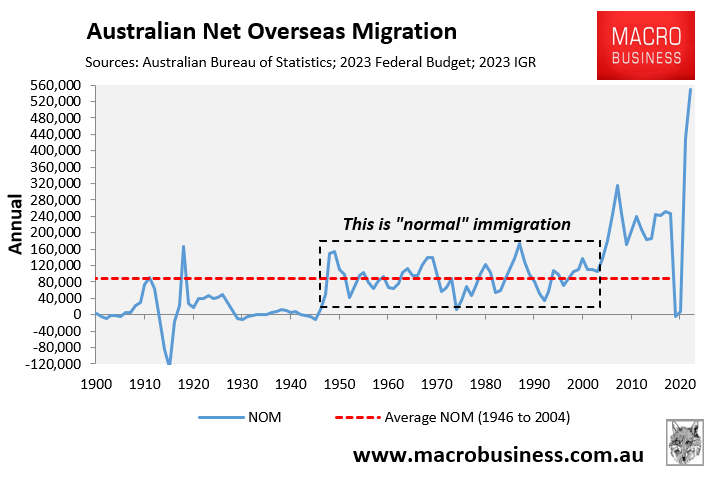
Australia’s international student concentration is absolutely off the charts compared to other nations – for example, the United Kingdom, United States, Canada, etc.
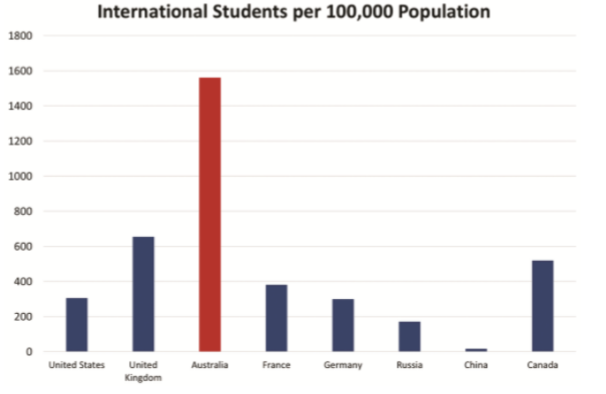
Source: Salvatore Babones (2019)
According to the Department of Education, Australia currently has 780,000 international students enrolled. That’s up about 100,000 from the pre-pandemic high.
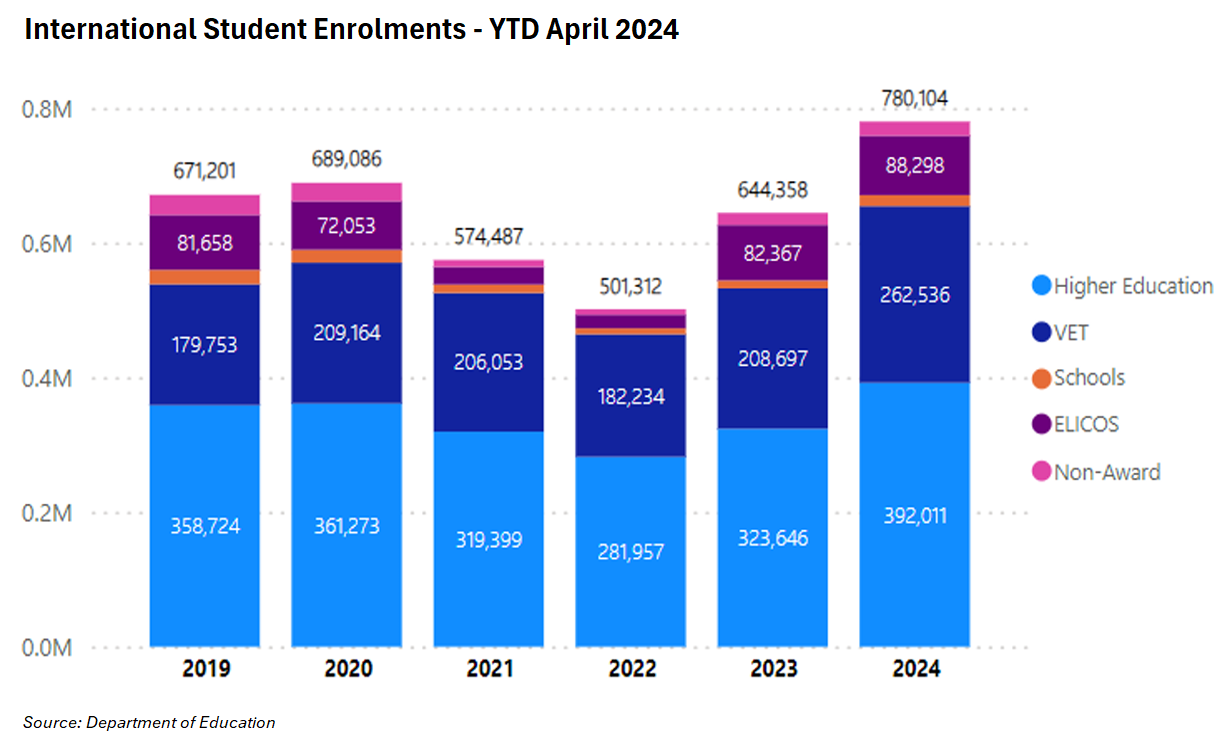
Department of Home Affairs data on visas shows that around one in 30 people in Australia are on either a student visa or a graduate visa.
The federal government were reported to be proposing a 40% cap on international student enrolments. But even that cap would mean that Australia’s concentration of students would dwarf anything else in the world.
So, for example, the single most international public university in the United States is the University of Illinois. That only has 23% international students. That is America’s most international university.
Now if you compare that to say the University of Sydney, which has nearly half international, the numbers in Australia are absolutely insane.
Over the past week, we’ve seen a whole bunch of reports come out showing that the system is broken.
The Guardian reported that our universities have basically been handing out prestigious degrees to international students who cannot speak English.

Academics have been complaining that they are not allowed to fail international students because it would harm their business.
The Guardian also reported that cheating among international students has become rife because they cannot speak English.
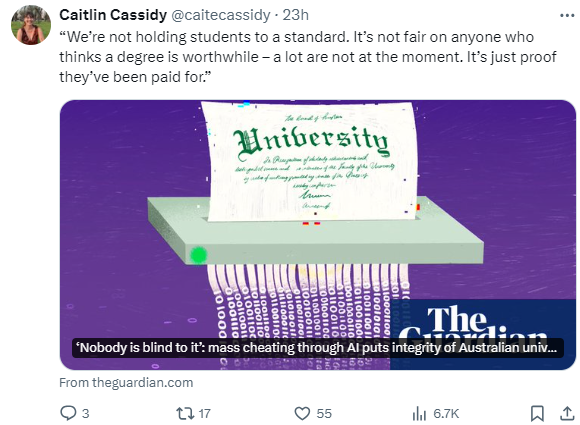
Local students have also been forced into group assignments, effectively doing all the work for international students.
Then the ABC reported this week that economics tutorials at Melbourne University have been held in Mandarin because they’re so highly concentrated in international students.
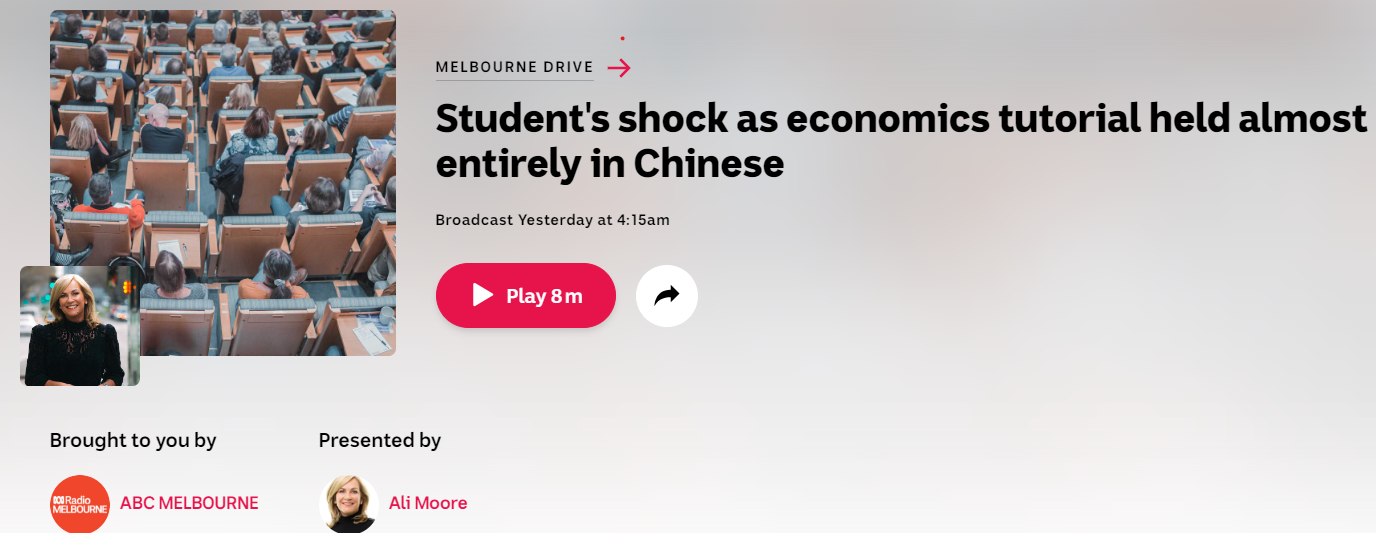
I don’t think this is a system that’s working particularly well. I think the numbers are far too high and any notion that a 40% cap is detrimental is ridiculous.
Who in their right minds thinks that four out of every 10 students going to a university in Australia should be international? Especially when concentrations in certain courses will be way higher.
The main reason why the number is so high is because Australia has handed out some of the most generous work rights and opportunities for permanent residency in the world.
The fact of the matter is that international education is really a migration industry.
I think anybody with common sense would recognise that Australia should aim for a much smaller volume of very high quality students and that the focus has gone to quantity over quality.
The other myth that is pervasive is that education is Australia’s third or fourth biggest export, valued at $48 billion currently.
That figure is complete statistical fraud. It is a fake number. It is fake because the Australian Bureau of Statistics counts as an export any dollar that international students spend, even if that money is earned in Australia.
Most of the students that come work while in Australia. International students are the only class of visa holders, not including tourists, whose expenditure while they are in Australia is counted as an export.
For example, if you have someone doing a vocational education and training course at a ghost college, so they’re not actually doing the course and they’re just here to work, and they work as an Uber driver and fill up the car with petrol, that petrol is counted as an export.
But if you have someone on a skilled work visa who’s been here for six months and fills up their car with petrol, it’s not counted as an export.
For those reasons, the ABS is grossly overvaluing the value of exports from education.
The other thing that tells you it’s not actually an export is migrant remittances, which tracks money flows into countries and out of countries from migrants.
Australia in 2023 actually sent out around $A12.5 billion ($US8.5 billion) in net migrant remittances.
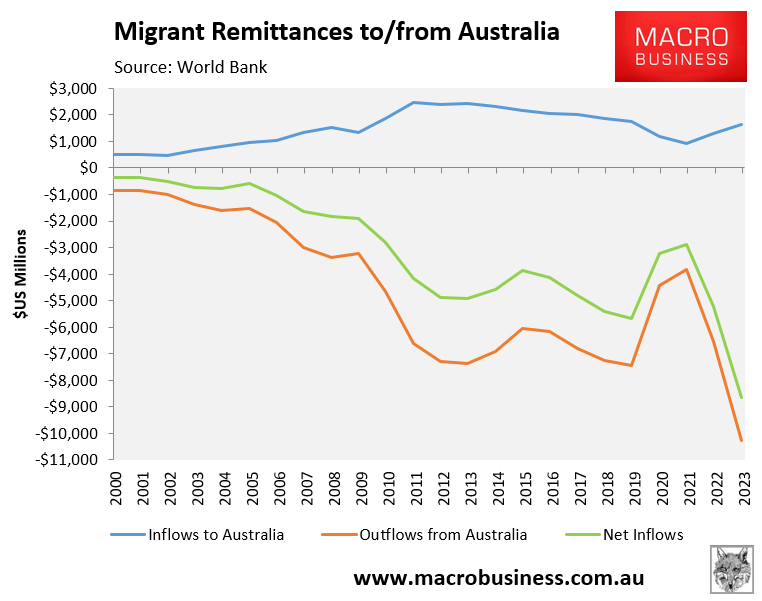
And if you plot those remittance outflows against international student visa numbers, they almost track one-for-one.
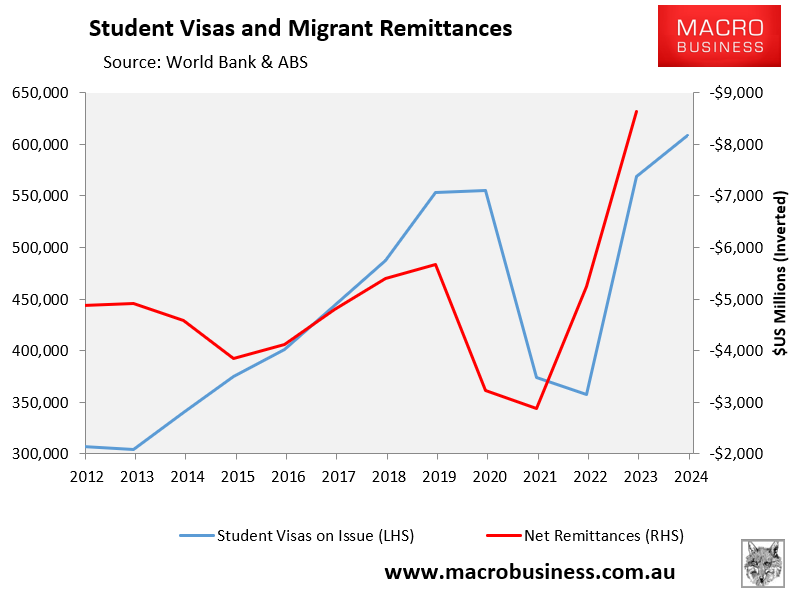
So, as international student numbers have gone up, the money flowing out of the country has gone up. And that, to me, is the opposite of an an export, which should bring money into your country.
But when you actually look at the money flows, money is flowing out of the country because a lot of students come here with very little. They work jobs to pay their way. They spend while working those jobs, which is wrongly counted as an export. And then they send money home through remittances to support their families at home, which is an import.
Unfortunately, the way the ABS counts international education, they claim that it is a $48 billion export industry when it’s not.

